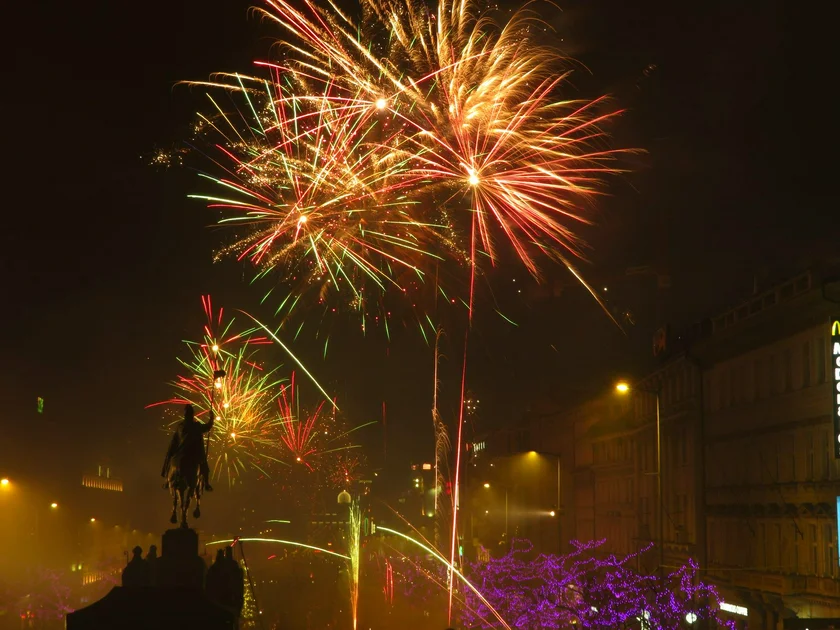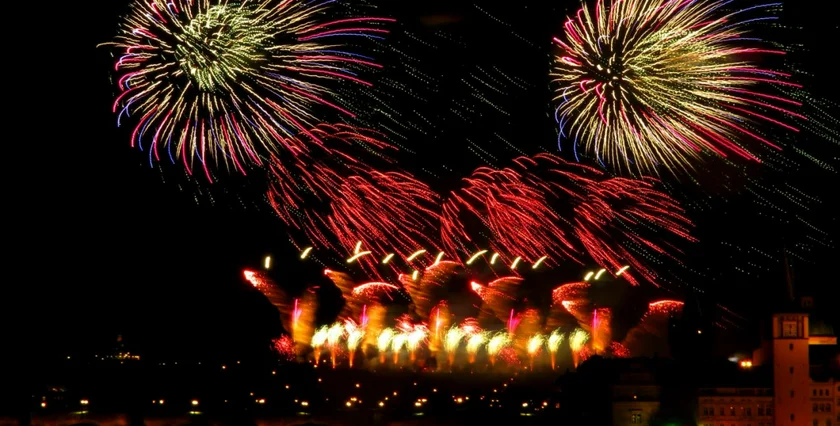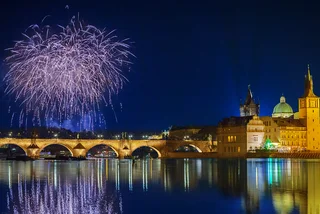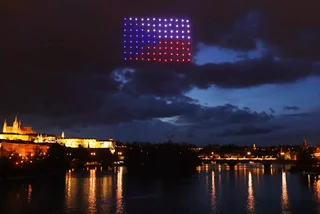Fireworks can be beautiful to watch, but they have a high impact on the ecosystem, scientists from the Czech Academy of Sciences (AV ČR) warn. Setting fireworks off on New Year’s Eve has long been a tradition in Prague, even though the number of places where it is legal to do so has become quite restricted. Scientists though say that for health reasons, a complete ban on fireworks should be considered.
This year, there will not be a large fireworks show in Prague on New Year’s Day either, due largely to concerns over pollution and injuries to wildlife. Large shows in Prague in the past have led to the deaths of swans and other waterbirds who panicked due to the noise. Pets such as dogs and cats have acute hearing and also are affected by loud noise.
Every year – especially during New Year's Eve celebrations – a large number of toxic substances enter the air. They are harmful not only to humans but also to animals and the environment. The director of AV ČR’s Institute for Hydrodynamics Martin Pivokonský and Petr Klusoň from AV ČR’s Institute of Chemical Processes said that the fireworks that light up the sky are “a toxic shower” for people and the environment.

The health risks of emissions from fireworks are enormous, but people underestimate them or ignore them. “Firework smog represents a very strange mixture of compounds with a great health risk, which otherwise could not occur in the atmosphere at all,” Klusoň said.
“If an industrial enterprise discharged such quantities of hazardous substances, it would face legal proceedings and closure. But people directly inhale this strange mix of poisons and carcinogenic substances and have no idea of its dangers,” Klusoň added.
Tons of toxic chemicals in the air
Based on the consumption of pyrotechnics, scientists have calculated that approximately 12.5 tons of magnesium, 0.8 tons of titanium, and 1.2 tons of rubidium are released into the atmosphere every year. Barium, which is used to achieve the green color, releases about 10.5 tons, as well as 1 ton of strontium, used for the red color, and about 0.5 tons of copper for the blue color effect. Red phosphorus, sulfur, powdered zinc, and other substances are also present in rockets.
“The amount of barium increases up to 580 times during a 45-minute fireworks display against the normal 'background' in the air under adverse weather conditions. For copper, these values are somewhat lower, the increase is seventy to ninety times, just like for strontium and rubidium,” Klusoň said.
These chemicals reach the lungs, where they can corrode the tissue. Some substances are stored or circulated in the body causing a huge shock for the human organism.
During firing, people are also exposed to high levels of carcinogenic antimony or thallium compounds, which are complex poisons. Highly toxicity arsenic compounds are also abundant in fireworks.

Winding up in the food chain
According to scientists, the increased values persist for several days, depending on the climatic conditions. “However, even after disappearing from the air, the compounds released during the explosion of the rocket continue into the environment, get into water and soil, and can enter food chains,” Pivokonský said.
“It must be emphasized that without fireworks, many of the mentioned elements would not be present in measurable quantities in the environment at all,” he added.
According to data from the Czech Trade Inspection Authority (ČOI), a large amount of pyrotechnics comes from illegal sales. Scientists point out that such cheaply bought firecrackers and rockets often contain substances that are banned in the European Union.
“The increase in lead in the air during fireworks is usually up to 60 times compared to the normal state. This fact points to the large share of illegal pyrotechnics on the European fireworks market,” Pivokonský said.
Safer alternatives exist
Appropriate monitoring is completely lacking in the Czech Republic and the European Union. “Due to the complete absence of educational activities, the ordinary citizen has no idea how risky his activity is, or how dangerous mixtures of compounds they and their loved ones, often small children, are exposed to,” Pivokonský.
Klusoň and Pivokonský recommend that a fundamental restriction of fireworks or its total ban be considered. Currently, there are also alternatives based on different technologies, for example, a drone light show or holograms.












 Reading time: 3 minutes
Reading time: 3 minutes 

























